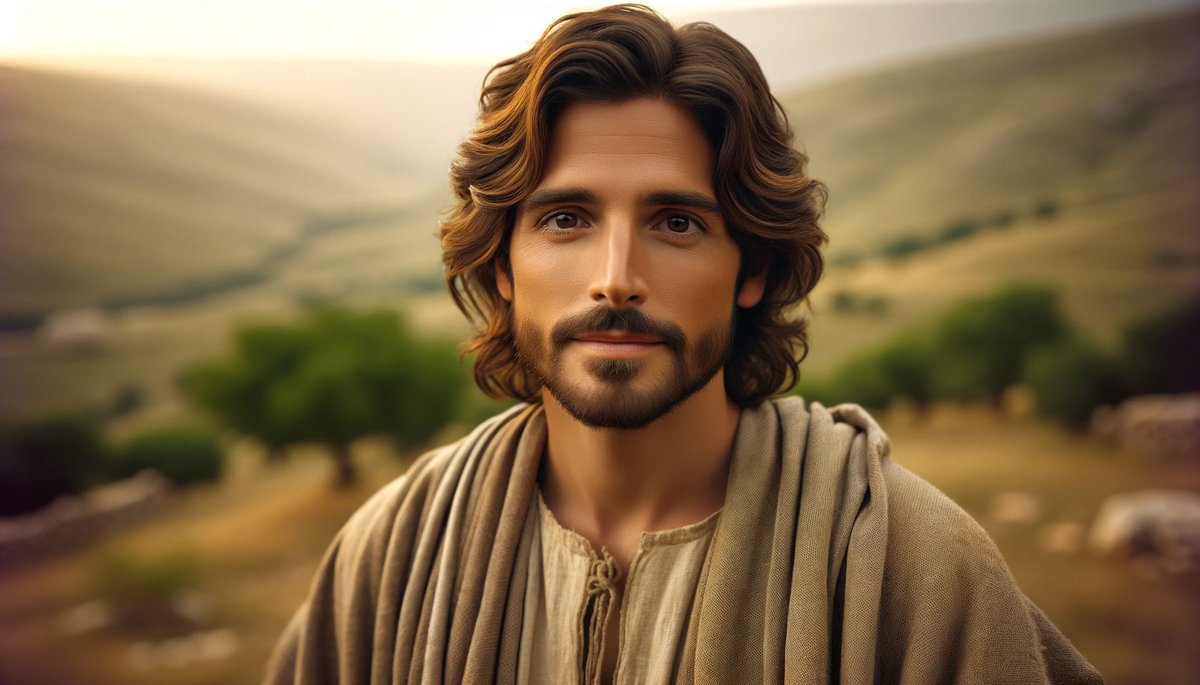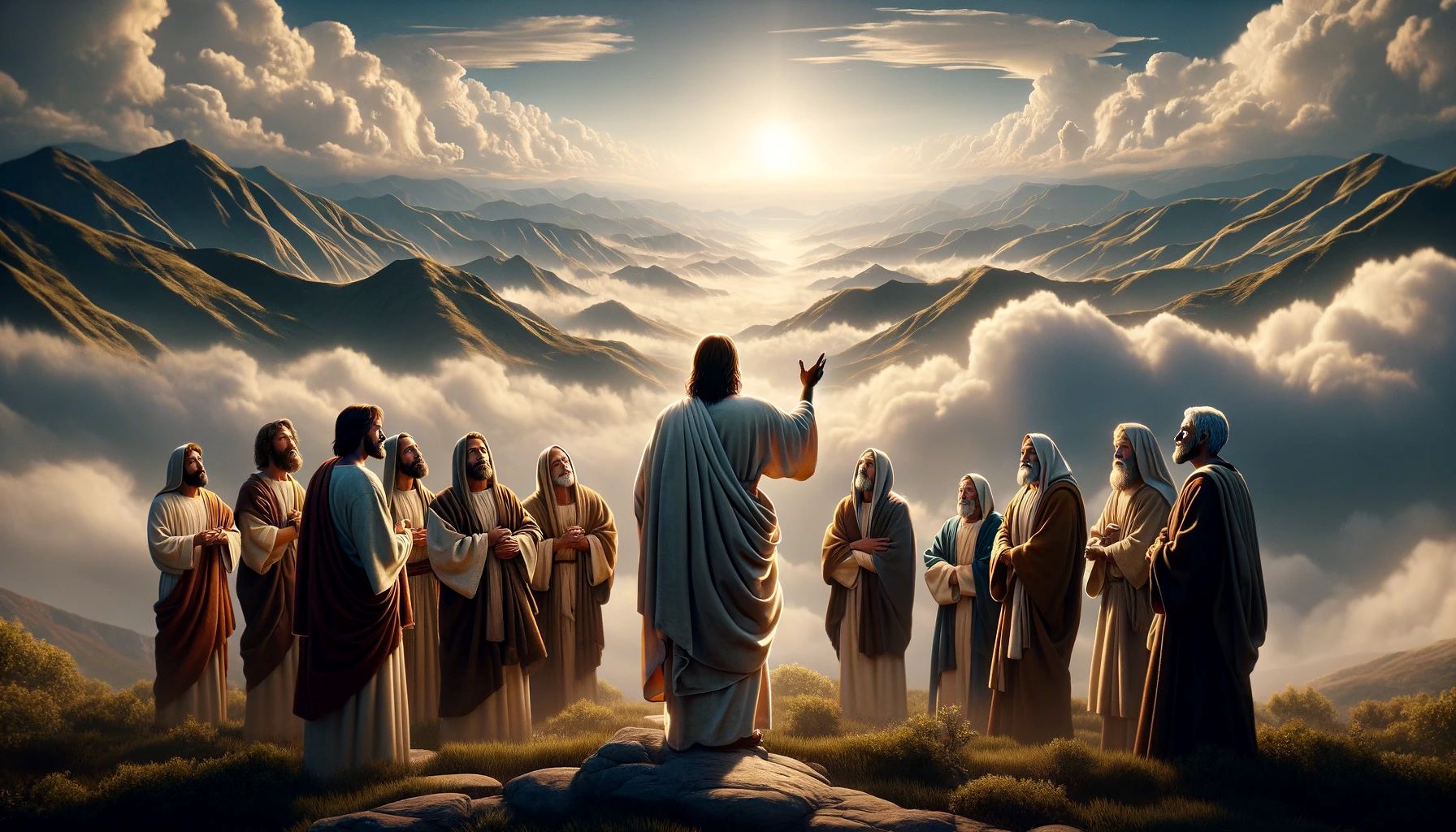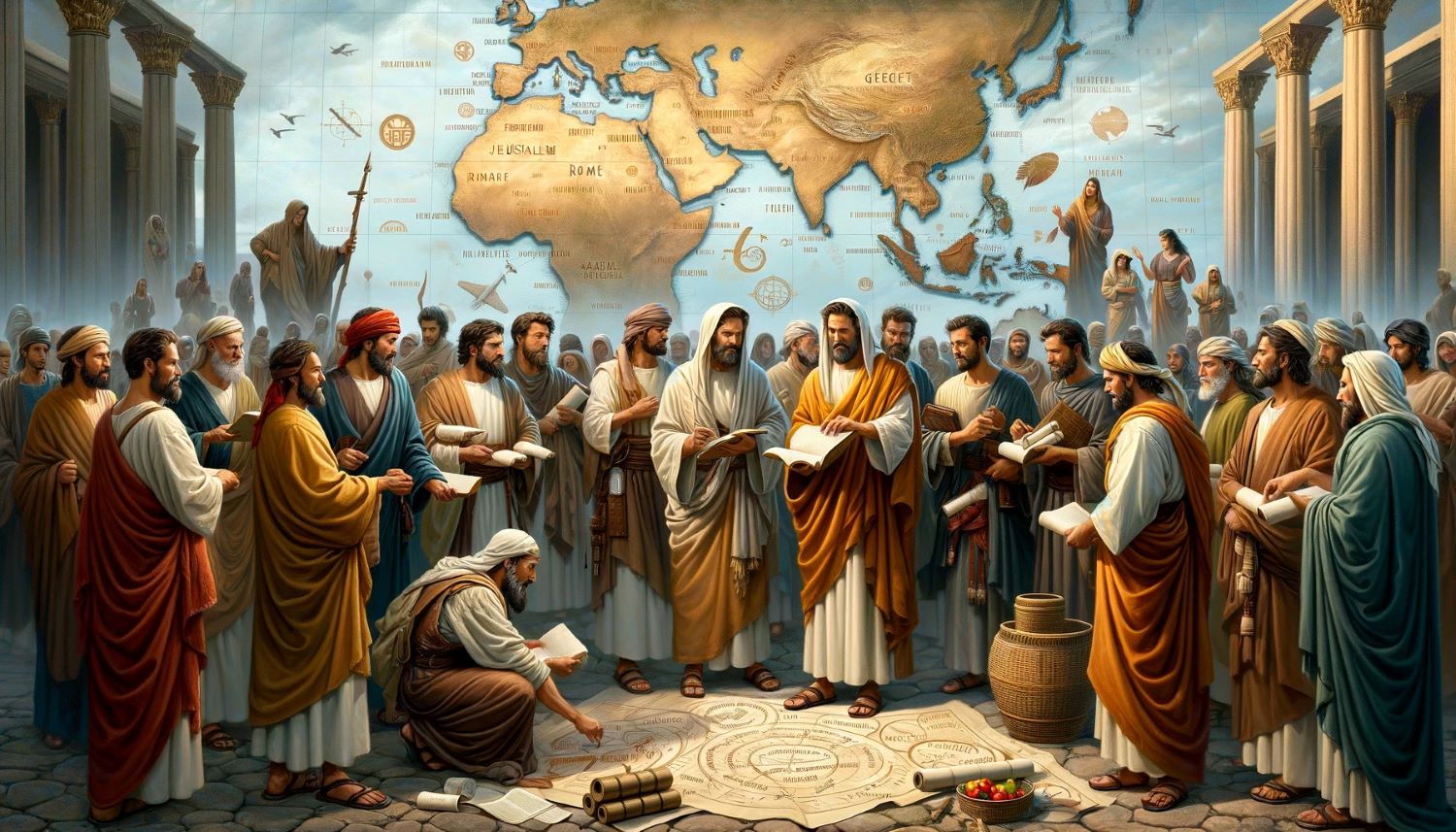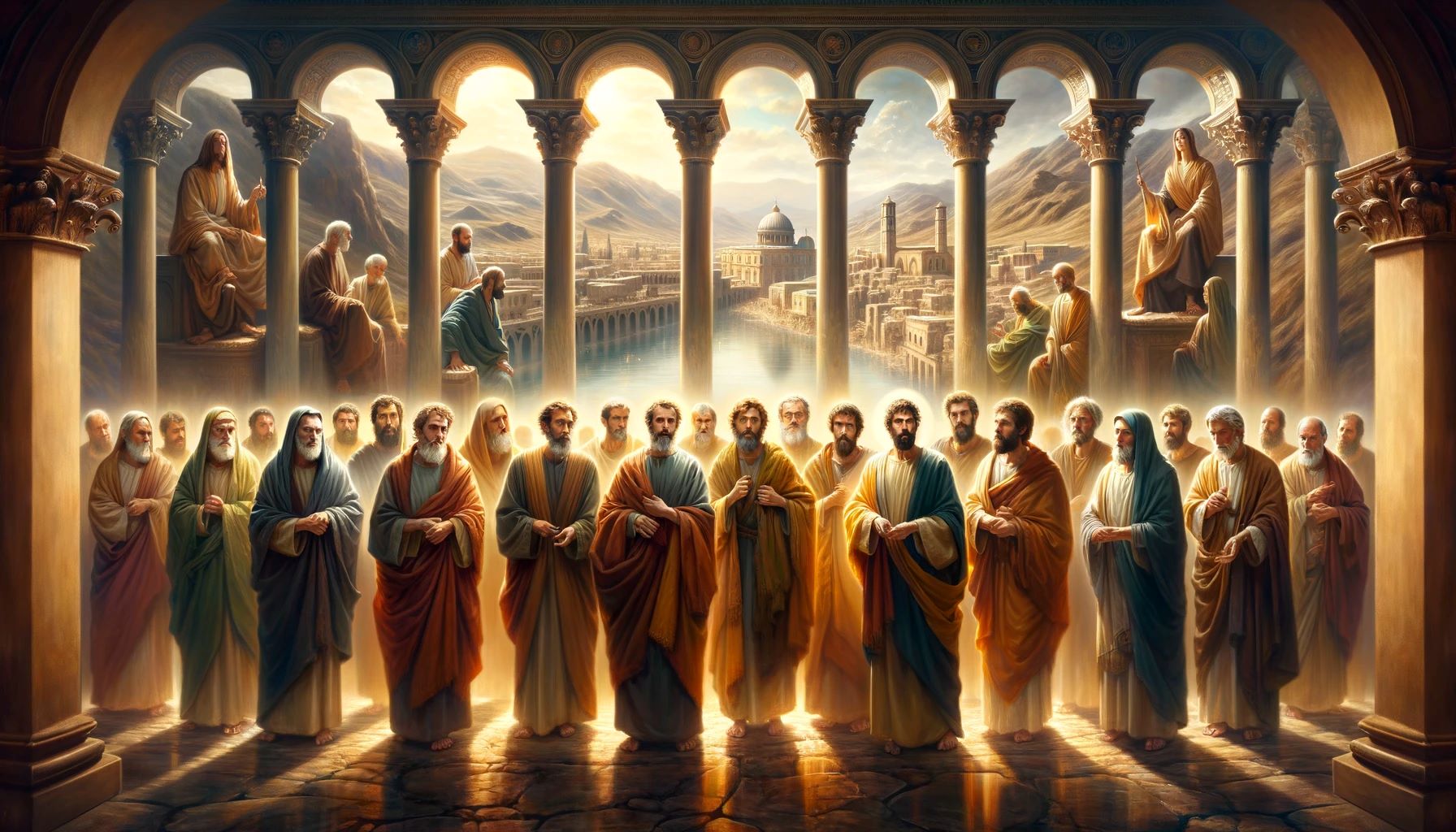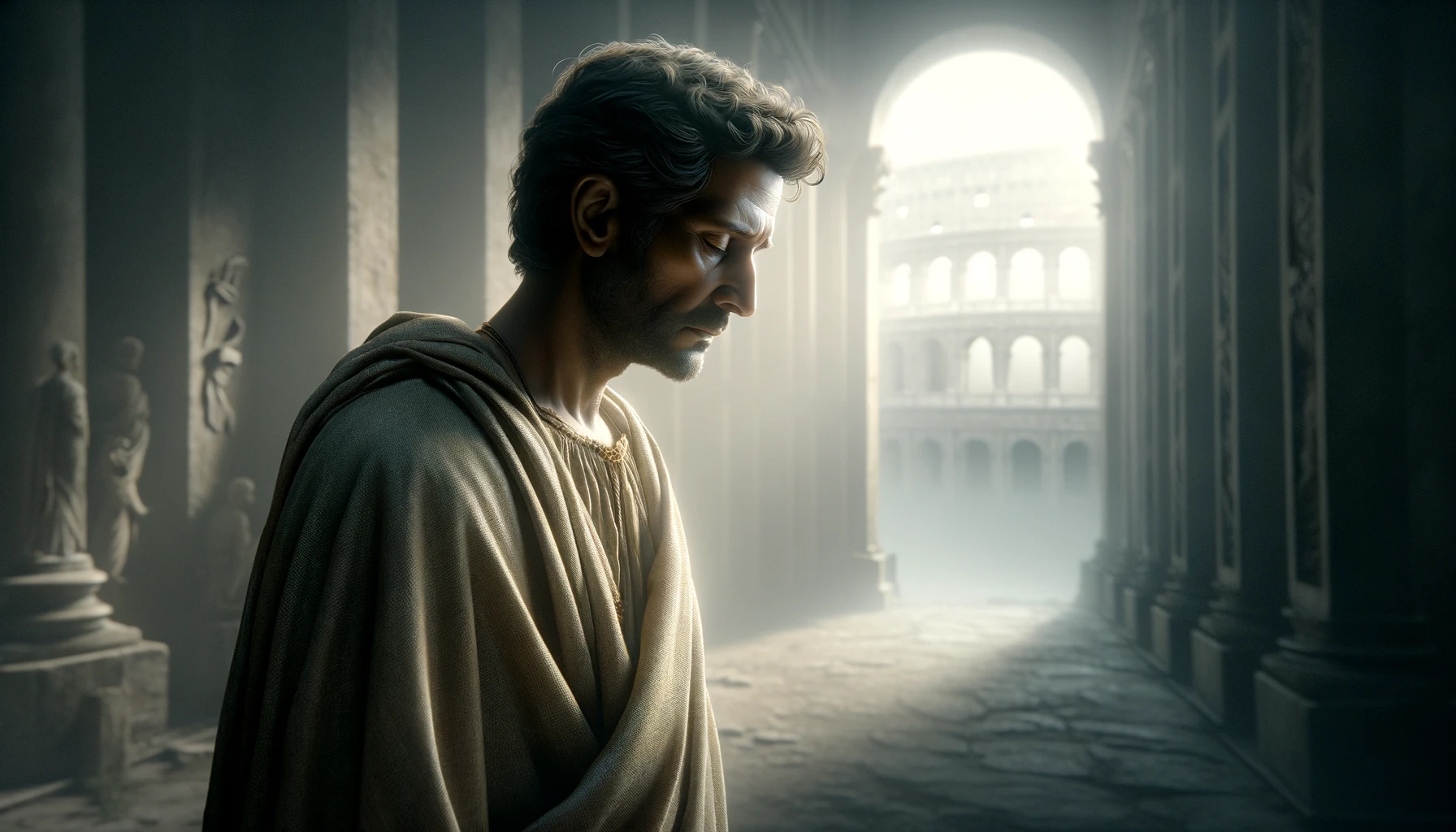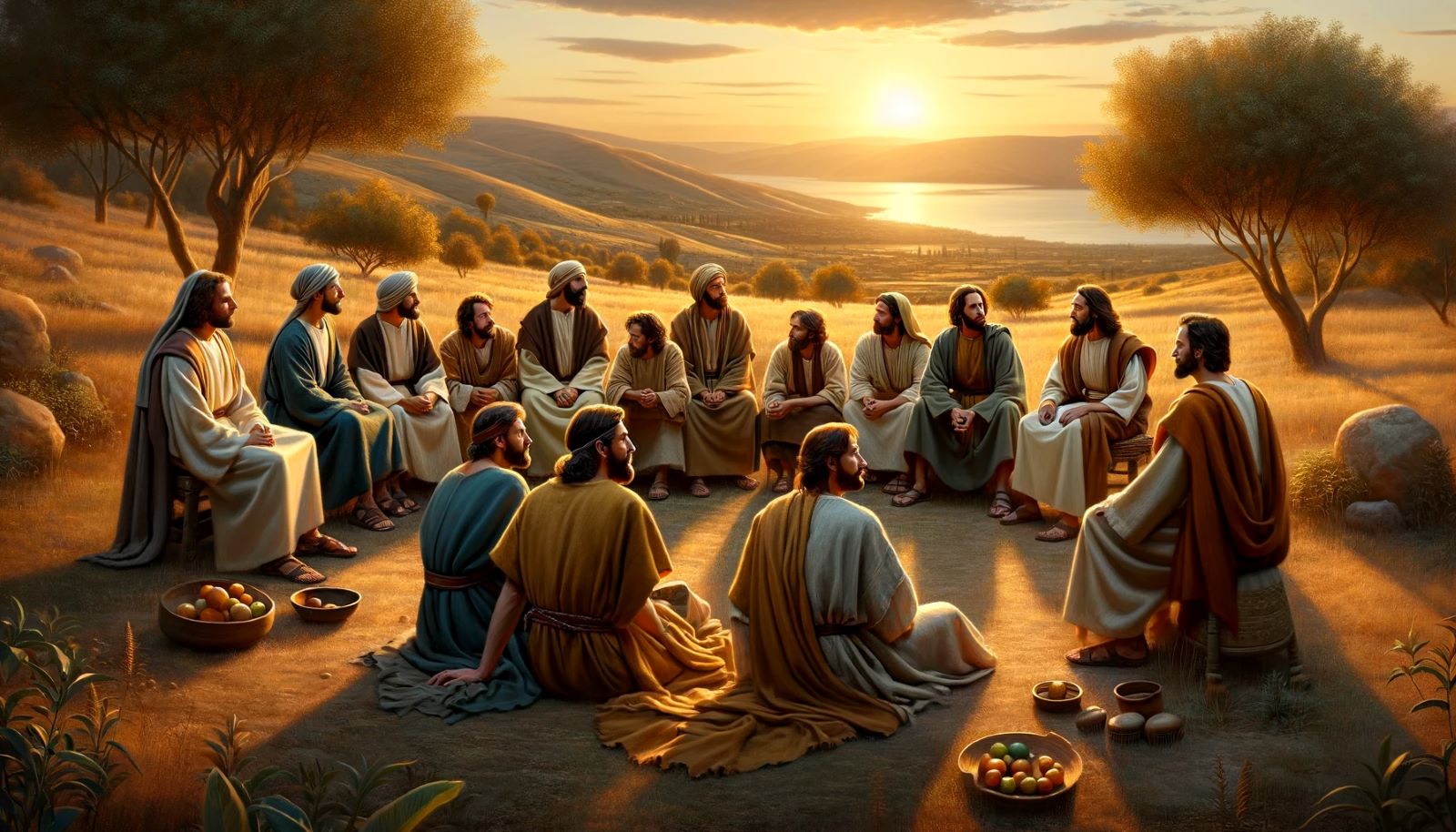Home>Bible Facts>What Did The Apostles Actually Look Like
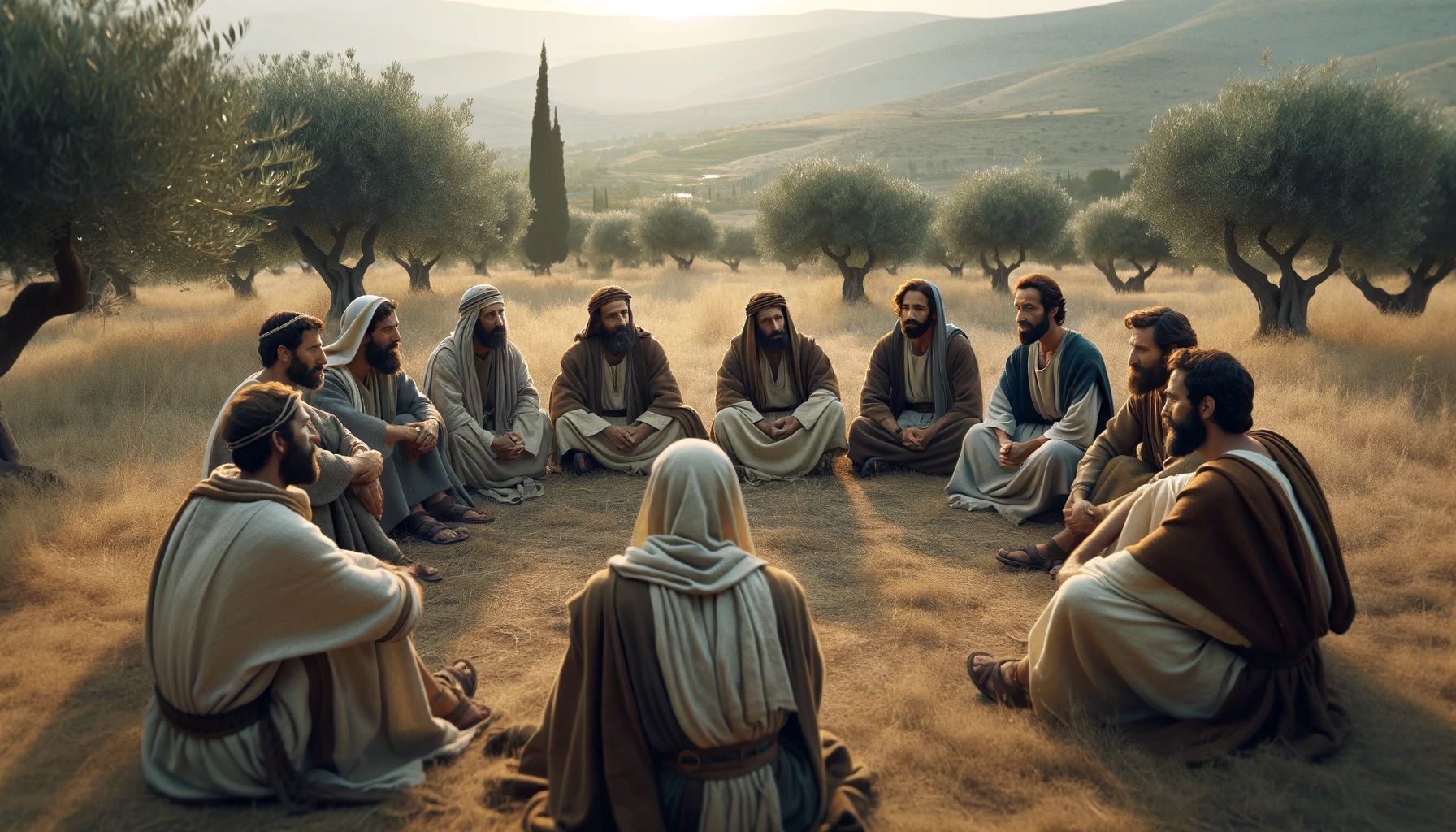

Bible Facts
What Did The Apostles Actually Look Like
Published: February 23, 2024
Ericka Andersen, an editor at Christian.net, expertly merges digital strategy with content creation, focusing on faith and societal issues. Her communication skills enhance the platform's engaging narratives, fostering meaningful dialogue on belief's impact on society.
Discover the true appearance of the apostles and explore fascinating Bible facts in this revealing article. Uncover the secrets of their physical features and more.
(Many of the links in this article redirect to a specific reviewed product. Your purchase of these products through affiliate links helps to generate commission for Christian.net, at no extra cost. Learn more)
Table of Contents
Introduction
The apostles, also known as the Twelve Disciples, were a group of individuals chosen by Jesus Christ to spread his teachings and establish the early Christian church. These men played a pivotal role in the foundation of Christianity and the dissemination of its message across the ancient world. Despite their profound influence, the physical appearances of the apostles have remained a subject of curiosity and speculation throughout history.
Intriguingly, the Bible provides limited explicit descriptions of the apostles' physical features, leaving much to the imagination. This has led to a wide array of artistic interpretations and cultural representations over the centuries. From the iconic depictions in Renaissance paintings to the modern forensic reconstructions, the quest to uncover the true likeness of the apostles has captivated the minds of scholars, artists, and believers alike.
Unraveling the mystery of the apostles' appearance offers a fascinating glimpse into the intersection of history, faith, and art. By delving into the historical context, biblical descriptions, artistic renditions, and contemporary reconstructions, we can embark on a captivating journey to uncover the enigmatic visages of these revered figures. Join us as we embark on a quest to unravel the timeless mystery of what the apostles actually looked like.
Read more: What Did The Apostles Do?
The Historical Context of the Apostles
The apostles inhabited a pivotal era in history, characterized by a complex tapestry of political, social, and religious dynamics. Their lives unfolded against the backdrop of Roman occupation in the region of Judea, a period marked by profound cultural interplay and ideological ferment. The socio-political landscape of the time was rife with tension, as the Jewish population grappled with the imposition of Roman authority and the enduring quest for autonomy.
Amidst this milieu, Jesus Christ emerged as a transformative figure, attracting a following of diverse individuals who would later become known as the apostles. These men hailed from varied backgrounds and professions, reflecting the eclectic nature of Jesus' ministry. From fishermen to tax collectors, the apostles embodied a cross-section of society, united by their shared commitment to Christ's teachings.
The apostles' journeys traversed the diverse terrain of the ancient world, encompassing regions such as Galilee, Samaria, and beyond. Their itinerant lifestyle and fervent propagation of Christian doctrine brought them into contact with a wide spectrum of cultures and belief systems, shaping their perspectives and experiences in profound ways.
Furthermore, the apostles' endeavors unfolded within the crucible of religious ferment, as Judaism underwent a period of introspection and redefinition. The emergence of Christianity as a distinct faith tradition posed a profound challenge to established religious norms, sparking debates and controversies that reverberated throughout the ancient world.
In essence, the historical context of the apostles encapsulates a rich tapestry of cultural, political, and religious dynamics, offering a compelling lens through which to understand their lives and missions. By situating the apostles within this intricate framework, we gain a deeper appreciation for the complexities they navigated and the enduring impact of their endeavors on the course of history.
Physical Descriptions in the Bible
The Bible provides limited explicit physical descriptions of the apostles, often focusing more on their actions and teachings rather than their appearances. However, there are a few references that offer glimpses into their potential physical attributes.
One notable mention is in the Gospel of Matthew, where Simon Peter is described as Simon Bar-Jonah, indicating his paternity. This detail provides a cultural context, suggesting a Jewish heritage and potentially dark hair and eyes, typical of individuals from that region. Additionally, Peter's impulsive and passionate nature, as depicted in the Gospels, may hint at a robust and expressive demeanor.
Another reference is found in the Gospel of Mark, which portrays James and John, the sons of Zebedee, as "Sons of Thunder." This evocative epithet suggests a fiery and zealous disposition, offering subtle insight into their character traits rather than their physical appearance.
The apostle Paul, although not part of the original twelve, is a prominent figure in the New Testament. In his letters, he alludes to his own physical afflictions, indicating that he may not have possessed a commanding or imposing presence. This vulnerability and humility are integral to Paul's persona, shaping his interactions and leadership style within the early Christian community.
While these references provide intriguing hints, the absence of comprehensive physical descriptions in the Bible has fueled diverse interpretations and artistic representations of the apostles throughout history. The enigmatic nature of their appearances has spurred imaginative depictions in art, literature, and popular culture, contributing to the enduring allure of uncovering the true likeness of these revered figures.
The scarcity of explicit physical descriptions in the Bible invites contemplation and invites individuals to connect with the apostles on a deeper, more spiritual level, transcending the constraints of physical attributes. This open-ended approach has fostered a rich tapestry of interpretations, allowing for diverse and meaningful engagements with the timeless legacy of the apostles.
Artistic Depictions of the Apostles
Artistic renditions of the apostles have permeated the annals of art history, offering a diverse array of interpretations that reflect the cultural, religious, and aesthetic sensibilities of their respective epochs. From the iconic portrayals in Renaissance masterpieces to the evocative representations in Byzantine icons, the apostles have served as enduring subjects of artistic inspiration, captivating the imaginations of artists and viewers alike.
In the realm of Renaissance art, the apostles emerged as central figures in religious compositions, often depicted in grand tableaus that exuded a sense of divine majesty and human vulnerability. Artists such as Leonardo da Vinci, Raphael, and Michelangelo imbued the apostles with a profound sense of humanity, endowing them with nuanced expressions and gestures that conveyed the depth of their spiritual calling. These masterpieces not only showcased the technical virtuosity of the artists but also offered poignant meditations on the apostles' roles as conduits of faith and witnesses to profound spiritual truths.
The Byzantine tradition, characterized by its rich symbolism and spiritual iconography, presented the apostles in a manner that emphasized their transcendent significance within the Christian narrative. Byzantine icons portrayed the apostles with a sense of otherworldly splendor, utilizing intricate patterns, vibrant colors, and stylized forms to convey the divine aura that enveloped these revered figures. The apostles were rendered with a timeless quality, evoking a sense of eternal presence that transcended the confines of earthly existence.
In addition to traditional artistic mediums, the apostles have also been depicted in literature, music, and popular culture, permeating the collective consciousness with their enduring resonance. From epic poems that exalted their valor to choral compositions that celebrated their steadfast faith, the apostles have inspired a multifaceted tapestry of creative expressions that continue to resonate across diverse artistic domains.
The enduring appeal of artistic depictions of the apostles lies in their ability to transcend temporal and cultural boundaries, inviting viewers to contemplate the timeless themes of faith, sacrifice, and redemption. Whether rendered in the opulent splendor of Renaissance paintings or the ethereal beauty of Byzantine icons, the apostles continue to serve as compelling muses for artistic exploration, inviting audiences to embark on a profound journey of spiritual contemplation and aesthetic appreciation.
Modern Forensic Reconstructions
In recent years, advancements in forensic science and technology have sparked a renewed interest in uncovering the physical likenesses of historical figures, including the apostles. Modern forensic reconstructions, employing state-of-the-art techniques and methodologies, have sought to shed light on the enigmatic visages of these revered individuals, offering a tantalizing glimpse into their potential appearances.
Forensic reconstructions typically commence with a meticulous analysis of skeletal remains or historical data, providing a foundation for the subsequent process. Through the utilization of cutting-edge imaging technologies such as computed tomography (CT) scans and three-dimensional (3D) modeling, forensic experts can generate virtual representations of cranial structures, offering invaluable insights into the anatomical features of the subjects under investigation.
Moreover, the integration of anthropological data and population-specific metrics enables forensic specialists to extrapolate facial reconstructions with a remarkable degree of precision. By leveraging databases of craniofacial measurements and ethnographic characteristics, forensic reconstructions can yield visual approximations that align with the genetic and morphological profiles of the individuals in question.
In the context of the apostles, modern forensic reconstructions have sought to reconcile historical accounts, archaeological findings, and anthropological data to craft plausible depictions of their facial features and physical attributes. While the absence of direct physical remains presents inherent challenges, forensic experts have employed comparative analyses and probabilistic modeling to generate facial reconstructions that resonate with the cultural and genetic contexts of the apostles' milieu.
The application of forensic reconstructions to elucidate the appearances of the apostles represents a compelling convergence of science, history, and faith. By harnessing the power of cutting-edge methodologies, these endeavors offer a tantalizing glimpse into the potential visages of the apostles, enriching our understanding of their lived experiences and cultural contexts.
In essence, modern forensic reconstructions stand as a testament to the enduring allure of unraveling historical mysteries and engaging with the enigmatic figures who have shaped the course of human history. Through the synergy of scientific inquiry and historical inquiry, these reconstructions invite us to embark on a captivating journey to envision the faces of the apostles, bridging the chasm between antiquity and modernity with a sense of wonder and reverence.
Read more: What Did The Apostles Teach
Conclusion
The quest to unravel the enigmatic visages of the apostles has traversed the realms of history, faith, art, and science, offering a captivating odyssey that transcends temporal and cultural boundaries. From the historical context of Roman-occupied Judea to the diverse artistic interpretations in Renaissance masterpieces and Byzantine icons, the apostles have emerged as enduring symbols of spiritual devotion and human resilience. The scarcity of explicit physical descriptions in the Bible has fostered a rich tapestry of interpretations, inviting individuals to engage with the apostles on a deeper, more spiritual level, transcending the constraints of physical attributes.
The convergence of modern forensic reconstructions with historical and anthropological data has kindled a renewed fascination with uncovering the potential appearances of the apostles, offering tantalizing glimpses into their enigmatic visages. Through the application of cutting-edge imaging technologies and probabilistic modeling, forensic experts have endeavored to craft facial reconstructions that resonate with the genetic and cultural contexts of the apostles' milieu, enriching our understanding of their lived experiences and cultural dynamics.
Furthermore, the enduring appeal of artistic depictions of the apostles lies in their ability to transcend temporal and cultural boundaries, inviting viewers to contemplate the timeless themes of faith, sacrifice, and redemption. Whether rendered in the opulent splendor of Renaissance paintings or the ethereal beauty of Byzantine icons, the apostles continue to serve as compelling muses for artistic exploration, inviting audiences to embark on a profound journey of spiritual contemplation and aesthetic appreciation.
In essence, the quest to uncover the true likeness of the apostles transcends mere physical attributes, offering a profound meditation on the enduring legacy of these revered figures. Their lives and teachings have left an indelible imprint on the fabric of human history, inspiring countless generations to seek truth, embrace faith, and embody compassion. The enigmatic allure of the apostles' appearances serves as a testament to the enduring power of their message, inviting individuals to embark on a timeless journey of spiritual discovery and cultural resonance.
As we navigate the intersection of history, faith, art, and science in our quest to envision the faces of the apostles, we are reminded of the enduring significance of their legacy, transcending the confines of time and space to resonate with the depths of the human spirit. In this timeless pursuit, we find not only a reflection of the apostles' enigmatic visages but also a profound mirror of our own aspirations, struggles, and triumphs, echoing across the annals of human experience with an enduring resonance.



